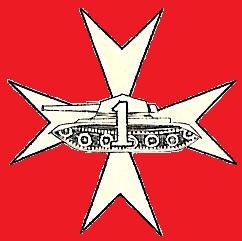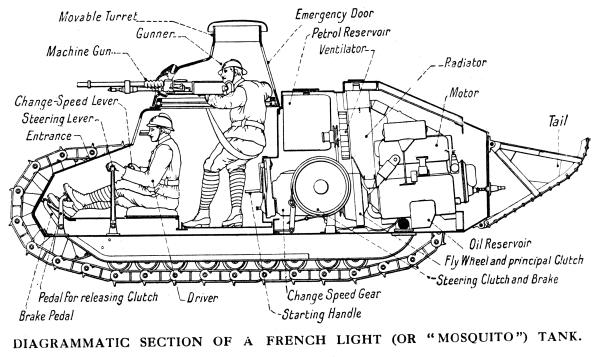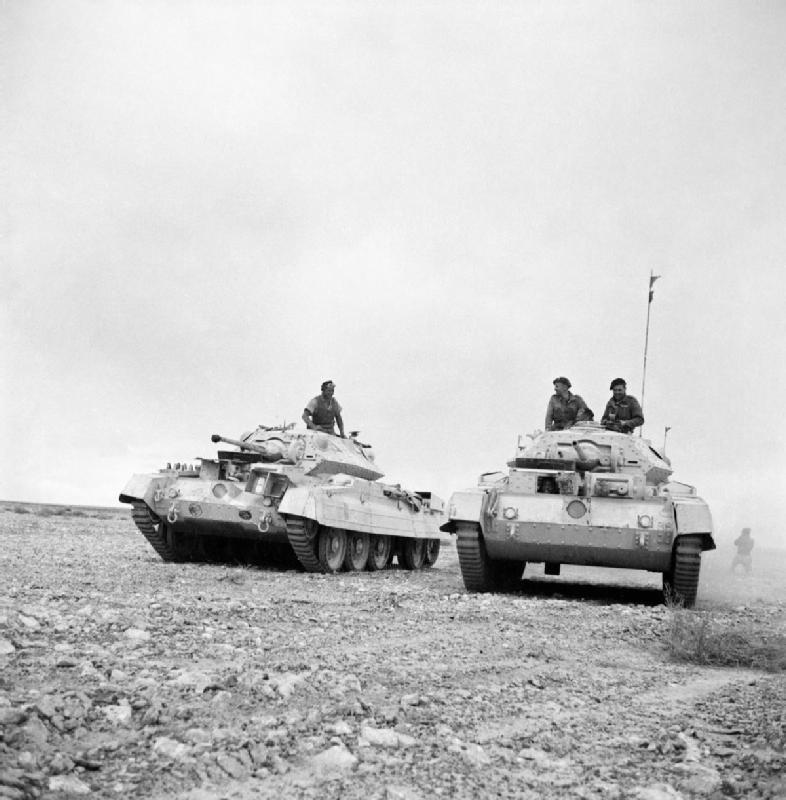|
1st Polish Armoured Regiment
The 1st Armoured Regiment ( pl, 1 Pułk Pancerny) was an armoured regiment of the Polish Armed Forces in the West during World War II, part of the 1st Armoured Division (Poland), 1st Armoured Division. France 1939 The 1st Polish Armoured Regiment of the 1st Armoured Division (Poland), 1st Polish Armoured Division has its origins in France. After the Russian Army invaded from the East, with the German Army invading from the West, the Polish government went into exile and the Polish Army in units, and as individuals, made their way to France to regroup. Some Polish soldiers came from Poland through enemy territory. Others took a roundabout route through neighbouring countries by any means available, some after being interned for a period of time. They all made their way to the camp at Coëtquidan in Brittany. This camp became the centre of the Polish Army in exile. Additional Poles came from the large émigré community in France and Belgium to enlist. On 20 November 1939, the Armo ... [...More Info...] [...Related Items...] OR: [Wikipedia] [Google] [Baidu] |
Polish Armed Forces In The West
The Polish Armed Forces in the West () refers to the Polish military formations formed to fight alongside the Western Allies against Nazi Germany and its allies during World War II. Polish forces were also raised within Soviet territories; these were the Polish Armed Forces in the East. The formations, loyal to the Polish government-in-exile, were first formed in France and its Middle East territories following the defeat and occupation of Poland by Germany and the Soviet Union in September 1939. After the fall of France in June 1940, the formations were recreated in the United Kingdom. Making a large contribution to the war effort, the Polish Armed Forces in the West was composed of army, air and naval forces. The Poles soon became shock troops in Allied service, most notably in the Battle of Monte Cassino during the Italian Campaign, where the Polish flag was raised on the ruined abbey on 18 May 1944, as well as in the Battle of Bologna and the Battle of Ancona (both also i ... [...More Info...] [...Related Items...] OR: [Wikipedia] [Google] [Baidu] |
World War II
World War II or the Second World War, often abbreviated as WWII or WW2, was a world war that lasted from 1939 to 1945. It involved the vast majority of the world's countries—including all of the great powers—forming two opposing military alliances: the Allies and the Axis powers. World War II was a total war that directly involved more than 100 million personnel from more than 30 countries. The major participants in the war threw their entire economic, industrial, and scientific capabilities behind the war effort, blurring the distinction between civilian and military resources. Aircraft played a major role in the conflict, enabling the strategic bombing of population centres and deploying the only two nuclear weapons ever used in war. World War II was by far the deadliest conflict in human history; it resulted in 70 to 85 million fatalities, mostly among civilians. Tens of millions died due to genocides (including the Holocaust), starvation, ma ... [...More Info...] [...Related Items...] OR: [Wikipedia] [Google] [Baidu] |
1st Armoured Division (Poland)
The Polish 1st Armoured Division (Polish ''1 Dywizja Pancerna'') was an armoured division of the Polish Armed Forces in the West during World War II. Created in February 1942 at Duns in Scotland, it was commanded by Major General Stanisław Maczek and at its peak numbered approximately 18,000 soldiers. The division served in the final phases of the Battle of Normandy in August 1944 during Operation Totalize and the Battle of Chambois and then continued to fight throughout the campaign in Northern Europe, mainly as part of the First Canadian Army. History After the fall of Poland and then France in 1940, many of the remaining Poles that had fought in both campaigns retreated with the British Army to the United Kingdom. Formation Stationed in Scotland, the Polish 1st Armoured Division was formed as part of the Polish I Corps under Wladyslaw Sikorski, which guarded approximately 200 kilometres of British coast in 1940-1941. The commander of the Division, General Stanislaw M ... [...More Info...] [...Related Items...] OR: [Wikipedia] [Google] [Baidu] |
Renault FT
The Renault FT (frequently referred to in post-World War I literature as the FT-17, FT17, or similar) was a French light tank that was among the most revolutionary and influential tank designs in history. The FT was the first production tank to have its armament within a fully rotating turret.Although a rotating turret had been a feature of some earlier tank designs or prototypes, and had been incorporated in armoured cars for several years, no tank with a turret had entered service. The Renault FT's configuration (crew compartment at the front, engine compartment at the back, and main armament in a revolving turret) became and remains the standard tank layout. Consequently, some armoured warfare historians have called the Renault FT the world's first modern tank. Over 3,000 Renault FT tanks were manufactured by French industry, most of them in 1918. After World War I, FT tanks were exported in large numbers. Copies and derivative designs were manufactured in the United States ( ... [...More Info...] [...Related Items...] OR: [Wikipedia] [Google] [Baidu] |
Stanisław Maczek
Lieutenant General Stanisław Maczek (; 31 March 1892 – 11 December 1994) was a Polish tank commander of World War II, whose division was instrumental in the Allied liberation of France, closing the Falaise pocket, resulting in the destruction of 14 German Wehrmacht and SS divisions. A veteran of World War I, the Polish–Ukrainian and Polish–Soviet Wars, Maczek was the commander of Poland's only major armoured formation during the September 1939 campaign, and later commanded a Polish armoured formation in France in 1940. He was the commander of the famous 1st Polish Armoured Division, and later of the I Polish Army Corps under Allied Command in 1942–45. Family Stanisław Władysław Maczek was born on 31 March 1892 in the Lwów suburb of Szczerzec (now Ukrainian: Shchyrets), then in Austro-Hungarian Galicia. His father was a lawyer, who after retiring opened chambers in Drohobycz. His family was of distant Croatian extraction; he was a cousin of the Croatian politici ... [...More Info...] [...Related Items...] OR: [Wikipedia] [Google] [Baidu] |
Crusader Tank
Crusader, in full "Tank, Cruiser Mk VI, Crusader", also known by its General Staff number A.15, was one of the primary British cruiser tanks during the early part of the Second World War. Over 5,000 tanks were manufactured and they made important contributions to the British victories during the North African campaign. The Crusader tank would not see active service beyond Africa, but the chassis of the tank was modified to create anti-aircraft, fire support, observation, communication, bulldozer and recovery vehicle variants. The first Crusader Mark I tanks entered service in 1941, and, though manoeuvrable, it was relatively lightly armoured and under-armed. The following Crusader Mark II had a maximum armour of . The main armament for the Crusader Mark I and II's was a 40 mm Ordnance QF 2-pounder gun; the following Crusader Mark III was fitted with a 57 mm Ordnance QF 6-pounder gun at the expense of one member of the crew in the turret. This variant was more than ... [...More Info...] [...Related Items...] OR: [Wikipedia] [Google] [Baidu] |
Covenanter Tank
The Cruiser tank Mk V or A13 Mk III Covenanter was a British cruiser tank of the Second World War. The Covenanter was the first cruiser tank design to be given a name. Designed by the London, Midland and Scottish Railway as a better-armoured replacement for the Cruiser Mark IV, it was ordered into production in 1939 before pilot models were built. Problems with the design became apparent only after production was under way. The tank equipped various British armoured divisions for home defence and training. It never left the UK as poor engine cooling caused the Mk I to Mk III to be declared unfit for overseas service especially in hot climates. This was rectified in the Mk IV after many corrective actions were undertaken but, by February 1944, it was declared obsolete. More than 1,700 of the type were built. It was named after the Covenanters, a Scottish religious faction at the time of the Wars of the Three Kingdoms. Development In 1938, the War Office had issued a requireme ... [...More Info...] [...Related Items...] OR: [Wikipedia] [Google] [Baidu] |
1 Armoured Regiment Flash
1 (one, unit, unity) is a number representing a single or the only entity. 1 is also a numerical digit and represents a single unit of counting or measurement. For example, a line segment of ''unit length'' is a line segment of length 1. In conventions of sign where zero is considered neither positive nor negative, 1 is the first and smallest positive integer. It is also sometimes considered the first of the infinite sequence of natural numbers, followed by 2, although by other definitions 1 is the second natural number, following 0. The fundamental mathematical property of 1 is to be a multiplicative identity, meaning that any number multiplied by 1 equals the same number. Most if not all properties of 1 can be deduced from this. In advanced mathematics, a multiplicative identity is often denoted 1, even if it is not a number. 1 is by convention not considered a prime number; this was not universally accepted until the mid-20th century. Additionally, 1 ... [...More Info...] [...Related Items...] OR: [Wikipedia] [Google] [Baidu] |
Hill 262
Battle of Hill 262, or the Mont Ormel ridge (elevation ), is an area of high ground above the village of Coudehard in Normandy that was the location of a bloody engagement in the final stages of the Battle of Falaise in the Normandy Campaign during the Second World War. By late summer 1944, the bulk of two German armies had become surrounded by the Allies near the town of Falaise. The Mont Ormel ridge, with its commanding view of the area, sat astride the only escape route still open to the Germans. Polish forces seized the northern height of the ridge on 19 August and held it until noon on 21 August, despite determined attempts by German units to overrun the position, contributing greatly to the Allied victory. The success of Operation Cobra provided the Allies with an opportunity to cut off and destroy most German forces west of the River Seine. American, British and Canadian armies converged on the area around Falaise, trapping the German 7th Army and elements of the 5th Panz ... [...More Info...] [...Related Items...] OR: [Wikipedia] [Google] [Baidu] |
St Nicolas Patch
ST, St, or St. may refer to: Arts and entertainment * Stanza, in poetry * Suicidal Tendencies, an American heavy metal/hardcore punk band * Star Trek, a science-fiction media franchise * Summa Theologica, a compendium of Catholic philosophy and theology by St. Thomas Aquinas * St or St., abbreviation of "State", especially in the name of a college or university Businesses and organizations Transportation * Germania (airline) (IATA airline designator ST) * Maharashtra State Road Transport Corporation, abbreviated as State Transport * Sound Transit, Central Puget Sound Regional Transit Authority, Washington state, US * Springfield Terminal Railway (Vermont) (railroad reporting mark ST) * Suffolk County Transit, or Suffolk Transit, the bus system serving Suffolk County, New York Other businesses and organizations * Statstjänstemannaförbundet, or Swedish Union of Civil Servants, a trade union * The Secret Team, an alleged covert alliance between the CIA and American indus ... [...More Info...] [...Related Items...] OR: [Wikipedia] [Google] [Baidu] |
1811 Route
Events January–March * January 8 – An unsuccessful slave revolt is led by Charles Deslondes, in St. Charles and St. James Parishes, Louisiana. * January 17 – Mexican War of Independence – Battle of Calderón Bridge: A heavily outnumbered Spanish force of 6,000 troops defeats nearly 100,000 Mexican revolutionaries. * January 22 – The Casas Revolt begins in San Antonio, Spanish Texas. * February 5 – British Regency: George, Prince of Wales becomes prince regent, because of the perceived insanity of his father, King George III of the United Kingdom. * February 19 – Peninsular War – Battle of the Gebora: An outnumbered French force under Édouard Mortier routs and nearly destroys the Spanish, near Badajoz, Spain. * March 1 – Citadel Massacre in Cairo: Egyptian ruler Muhammad Ali kills the last Mamluk leaders. * March 5 – Peninsular War – Battle of Barrosa: A French attack fails, on a larger ... [...More Info...] [...Related Items...] OR: [Wikipedia] [Google] [Baidu] |






_front-left_2017_Bovington.jpg)

